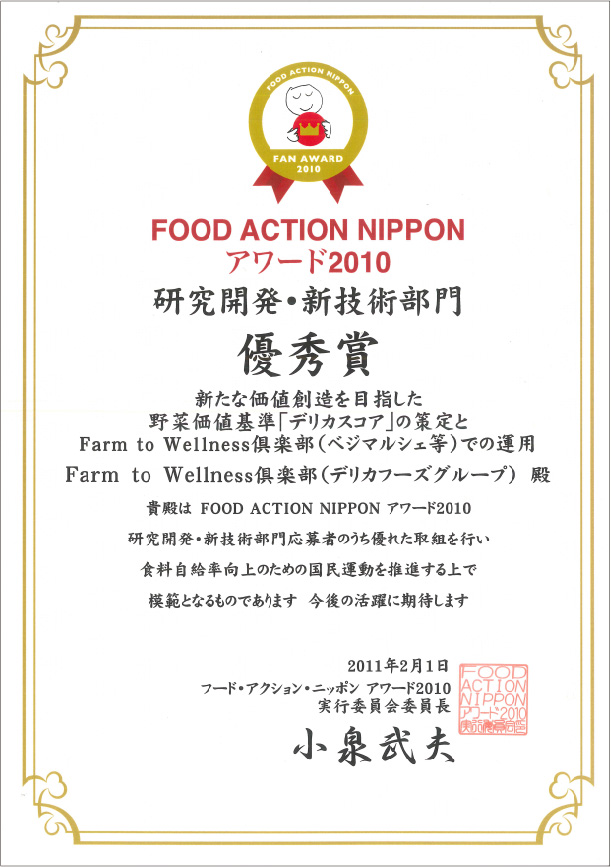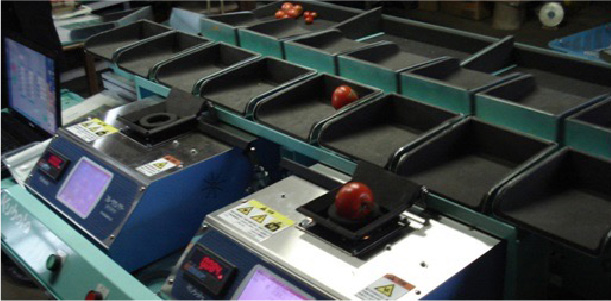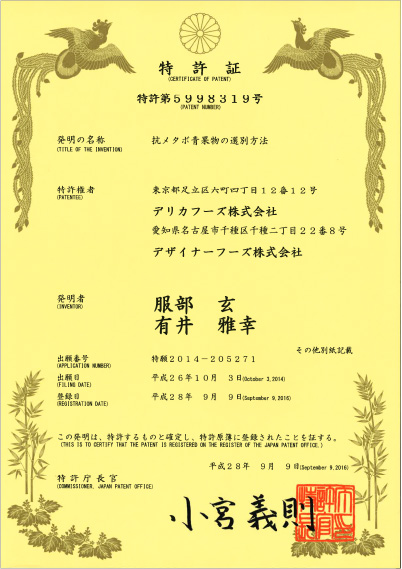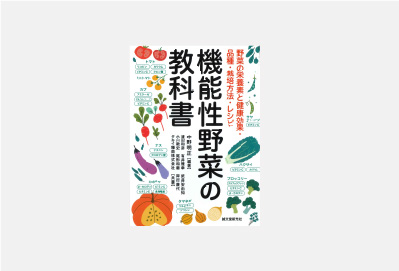- Group Companies and Affiliates
We have built a Vegetable Analysis Database
We evaluate vegetables not only by appearance but also by tastes and nutritional value.
Each vegetable has its own the best season by nature. It is commonly recognized that vegetables in the best season are delicious and have higher nutritional value. Our research (Fig. 1) shows that the “contents” of spinach considerably varies by depending on when and how it was grown, even though it all looks like the same.

As “Vegetable Health Checkups”, we investigated the monthly and yearly variations in radical-scavenging (RS) activity, an indicator of antioxidant activity, ascorbic acid, nitrate ion and degrees Brix of specified vegetables (by MAFF) mainly more than 20 years. And we have built the database of vegetables by accumulating analysis data.
We will be able to provide consumers and producers with information as to when is the best season of that vegetable, in terms of its antioxidant capacity and nutritional value.
We also have published the results as an academic paper (Fig. 2).

The health-related functions of vegetables have been studied all over the world. Delica Foods Group has verified them about the genetic level by using zebrafish (a lab animal). We have also revealed that the tomato’s antioxidant components (e.g., lycopene) have the ability to prevent fatty liver by acting on lipolytic enzyme genes in the liver, and we have published this studies in an academic article (Fig. 3).

Introduction of Delica Score® into Growing Districts and Further Use of This Original Vegetable Quality Evaluation Chart
Delica Score is radar chart system we have developed to evaluate vegetable quality based on the needs of buyers and consumers. This system features “vegetable health checkups” and consists of 19 evaluation items grouped into four categories: safety, cultivation, nutrient components, and distribution (Fig. 1).
Delica Score won the Excellence Award in the R&D and New Technology category at the Food Action Nippon Award 2010, cosponsored by the Ministry of Agriculture, Forestry and Fisheries (Fig. 2).
Fig. 1: Delica Score vegetable quality evaluation chart

Fig. 2: Food Action Nippon Award 2010 certificate

We have been introducing Delica Score into our contract farms around Japan both as a vegetable evaluation tool for meeting ever-diversifying needs and as guidelines for efforts to produce even higher-value-added vegetables.
Year after year, we have an increasing number of growing districts into which Delica Score has been introduced. In 2020, it reached 68 districts in 25 prefectures.

Delica Score has begun to be used throughout the process, from vegetable and fruit cultivation to distribution, processing, sales and consumption.
Applications of Delica Score include cultivation evaluation in terms of breed varieties, seedlings, and farming methods; distribution evaluation in terms of freshness, peak ripeness, and quality control; branding (sales promotion) based on special features and nutrient evaluation; and consumption expansion based on nutrition value, health improvement functions, and safety. Delica Score is becoming a de facto standard for the supply chain and value chain in vegetable distribution.
Delica Score’s Fields of Use

We develop New Technologies through cross-industrial collaboration
We will accelerate our commitment to the SDGs based on our achievement in developing non-destructive testing equipment.
We have developed non-destructive sorting equipment that measures the degrees Brix (deliciousness), nutrient (lycopene) and antioxidant capacity of tomatoes to sort individual items (Fig. 1). This development was subsidized under the “Project for a Rapid Spread of Innovative Technologies Toward the Realization of Aggressive Agriculture, Forestry, and Fisheries,” a commissioned research grant given by the collaboration of the Ministry of Agriculture, Forestry and Fisheries with another 11 industrial, public and academic organizations. This technological development has led us to acquire a patent for “a method of sorting fruits and vegetables for an anti-metabolic syndrome effect.” We have also collaborated with a major optical equipment manufacturer to develop non-destructive fruit-sorting equipment that detects internally damaged lemons (rotten to the core) (Fig. 2).

(Fig. 1)

(Fig. 2)

patent certificate
“A method of sorting fruits and vegetables for an anti-metabolic syndrome effect”
A pressing issue needed to achieve the SDGs (Sustainable Development Goals) is to establish sustainable smart agriculture and a smart food chain in response to various impacts of global warming. In line with the government’s pledge to achieve carbon neutrality by 2050, the Ministry of Agriculture, Forestry and Fisheries has formulated the Green Food System Strategy. The Delica Foods Group will work on the following issues: higher labor productivity through mechanization and labor saving; streamlined processing and distribution through the use of data and AI; the spread of sustainable consumption, including less food loss; and the comprehensive promotion of a nutritionally well-balanced Japanese-style diet.

Vegetables have not only nutrient functions, including vitamins, minerals, and dietary fiber, but also roles to coordinate our body in terms of antioxidant, immunological, and detoxification effects. We have analyzed these effects by using over 20,000 datas of fruits and vegetables which we have investigated. Our analysis has revealed that vegetables of different colors and grown in different areas have different effects, and that the intensity of a given effect can be changed by according to the cooking method and whether another ingredients are cooked together or not. This book shows you why vegetables are good for the body.
While being a researcher, the author was once the president of a company that sold vegetables wholesale to restaurants every day. She considers people’s health in these times of longevity, not only in the lab but also through practical learning.
Covering so many visualized effects of vegetables, this book is truly an eye-opener not only to consumers who are conscious of diet and health but also to nutritionists, cooks, restaurant owners,producers and even researchers.

How “functional” are vegetables, and how should they be used?
This book shares the latest information on functional vegetables, lists the functional components of each vegetable and the health effects of these components, and introduces breed varieties to enhance the functions, and their cultivation methods, specific case examples of growing districts.
The book is useful for agricultural producers in selecting vegetables and their breed varieties. It describes breed varieties and their cultivation techniques, and shares cooking recipes for farmers’ business expansion into vegetable processing, distribution, and sales.
We also recommend this book to diet-conscious consumers who consider eating as a means of maintaining their health. It contains analysis data of each vegetable’s components and explains their health effects, which are very useful in terms of nutrition management.